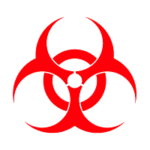Every parent’s deepest wish is to see their baby grow up healthy and strong. Yet, sometimes, despite all precautions and care, unexplained tragedies can occur. One such heartbreaking phenomenon that has concerned parents and medical professionals alike is Sudden Infant Death Syndrome (SIDS). The highest increase was seen in 2021 when SIDS rates surged 10% compared to pre-pandemic levels.
So, what is SIDS? The terms “cot death” and “sudden infant death syndrome” (SIDS) refer to the unexpected and sudden death of a healthy infant under the age of one year. The cause of SIDS is unknown to medical professionals. However, a baby may be at risk for SIDS due to specific factors, such as sleeping position, temperature, prenatal and postnatal factors. Keep reading as we explore in details what SIDS is, its causes, risk factors, and prevention strategies.
What is Sudden Infant Death Syndrome (SIDS)?
The sudden and unexplained death of a baby between the ages of one month and one year, even after a thorough investigation, is referred to as sudden infant death syndrome (SIDS). This investigation involves carrying out an autopsy, inspecting the death scene, and reviewing the baby’s medical history. The death will be classified as SIDS if the coroner or medical examiner is unable to determine the cause of death and the infant is under one year old.
The majority of babies who die of SIDS are between 2 and 4 months old, with 90% dying before the age of 6 months, indicating how common SIDS is. The majority of these babies appear to have died while sleeping, typically between midnight and 6 a.m. For this reason, SIDS is also referred to as “cot death” or “crib death” (less commonly used in modern medical discussions).
While a baby’s sleep environment can influence sleep-related causes of death, cribs do not cause SIDS. The actual SIDS cause is unknown. However, it could be caused by issues in the area of an infant’s brain that regulates breathing and waking up from sleep.
6 Potential Causes of SIDS
Investigation for the main cause of SIDS deaths is still ongoing. However, some SIDS deaths are believed to be caused by various other conditions, such as encephalitis, meningitis, and unidentified metabolic or congenital problems. Researchers have identified a variety of indications and potential triggers, which are listed below:
Rebreathing Stresses
When the baby lies face down, it may be more difficult for it to move air around its mouth. This may cause the baby to re-breathe the carbon dioxide that it has just exhaled. On the other hand, using a fan while sleeping has been linked to a 72% reduced risk of SIDS.
Other sleep surfaces are associated with thermal stress from over-insulation from clothing and bedding, and they may also obstruct regular airflow. These include soft bedding, gas-trapping things like blankets, comforters, waterbeds, sofas, chairs, soft mattresses, and stuffed or plush toys.
Poor Temperature Control
Some babies may have poor temperature regulation. Most SIDS deaths typically occur in the winter, possibly as a result of babies being overdressed and at risk of overheating. Some studies suggest that the number of SIDS deaths associated with different seasons is the same. However, overheating is still regarded as a SIDS risk.
Central Nervous System Abnormalities
SIDS babies may have an unidentified anomaly involving the central nervous system (brain, nerves, or spinal cord), even though they seem to be in excellent health. Autonomic dysfunction (episodic tachycardia/bradycardia, irregular heart rate variability), aberrant respiratory patterning, episodic obstructive apnoea during sleep, poor autoresuscitation (gasping), and arousal deficiencies are some of these problems.
Developmental Delay
A developmental delay impacts the formation and function of multiple serotonin-binding nerve cell pathways in the brain. These pathways play an important role in controlling blood pressure, heart rate, and breathing when you wake up from sleep.
Flawed Breathing Control
Babies with the condition may have some breathing control or ability issues, and certain babies may have borderline breathing pattern disorders (BPD). BPD is a set of breathing diseases characterized by abnormal breathing patterns that can cause intermittent or chronic (long-term) respiratory as well as non-respiratory symptoms. The late development of the breathing control section of the central nervous system could cause this.
Exposure To Tobacco Smoke
Smoke contains a number of toxic substances that can harm the cells of the body. Maternal smoking during pregnancy, as well as exposure to secondhand smoke for more than 15 min per day, can have an impact on newborn brain and lung development. As a result, an infant’s breathing becomes disturbed, which could lead to SIDS.
Common Risk Factors of SIDS
SIDS can occur to any infant. Experts have identified many factors that may increase the SIDS risk. The risk factors listed below may raise a baby’s chance of dying from SIDS:
- Sex: SIDS is slightly more prevalent in boys than in girls.
- Race: Native Americans, Alaskan natives, and African Americans are the groups most commonly affected by SIDS. Doctors are unsure why.
- Birth Weight: Premature babies, especially those born very small, are more likely to die from SIDS instead of full-term infants.
- Family History: A baby’s chances increase if a sibling or cousin has died from SIDS.
- Socioeconomic Influences: Access to healthcare and socioeconomic status may also contribute to SIDS risk. Families with limited access to prenatal care may be less informed about safe sleep practices, which further increases vulnerability.
- Stress Factors: Stressful environments for infants, including exposure to respiratory infections or adverse experiences, can heighten the risk for SIDS as well.
Stress and SIDS
Stress or anxiety from poor sleep posture, secondhand smoke, or a respiratory ailment can all increase the risk of SIDS. Additionally, there is evidence that babies may be at risk for SIDS if they experience repeated, prolonged, stressful, or unpleasant experiences either before or after birth.
SIDS and vaccines
Many research studies and safety evaluations indicate that there is no link between vaccines and SIDS. Babies receive several vaccinations between the ages of two and four months when the risk of SIDS is at its highest. Therefore, whether immunizations have an impact has been debated.
Are There Any Symptoms of SIDS?
There are no possible symptoms or warning signs of SIDS before it happens. However, inherited fatty acid oxidation diseases may closely mimic the sudden infant death syndrome. SIDS babies appear healthy before they are put to bed. They are frequently discovered in the same position as when they were put in the bed and exhibit no specific SIDS symptoms or signs of struggle.
How Do Medical Professionals Diagnose SIDS?
Sudden infant death is still an unpredictable and largely unexplained tragedy. The baby appears to be in good health, with no signs of distress or significant illness prior to the incident.
- Death happens quickly while the infant is sleeping.
- Typically, the event is held in silence. The baby doesn’t cry.
- Prior to death, the infant appears to be well-developed, well-fed, and in overall good health.
SIDS cannot be identified before the baby dies; hence there is no pre-diagnosis. SIDS is usually diagnosed after an extensive medical examination has failed to pinpoint the exact cause of death. Moreover, doctors usually take the following steps to confirm SIDS:
- Medical History
Healthcare professionals may conduct interviews with caregivers using non-accusatory, open-ended questions. They will determine the presence of risk factors such as the infant’s sleeping position, co-sleeping, and medical history (including prenatal).
- Autopsy
An autopsy may reveal congenital anomalies, traumas, infections, and metabolic problems. It consists of an exterior and internal assessment, radiologic examination, microbiology, toxicology, and laboratory tests. Electrolytes, inborn metabolic abnormalities, and genetic disorders/polymorphisms are all essential laboratory assessments.
- Metabolic Screening
The recommended metabolic lab tests are plasma acylcarnitine profile, quantitative plasma carnitine levels, quantitative plasma amino acid analysis, qualitative urine organic acid analysis, and plasma lactate and pyruvate.
- Death Scene Investigation
First responders should be educated to conduct visual inspections of the environment when they arrive at the site before starting to resuscitate the patient. It is important to note the following:
- The room temperature,
- The infant’s first temperature,
- The type of ventilation or heating system in use in the home, the infant’s location,
- The condition and quality of the bed/crib,
- The amount and location of the infant’s clothing,
- The presence or absence of bedding or soft objects in the sleeping environment,
- The presence or absence of marks on the infant’s body and
- The reactions of the caregivers.
Also read: How to Perform CPR on a Choking Infant.
What is Safe-to-Sleep?
The incidence of SIDS has significantly decreased since the American Academy of Pediatrics (AAP) recommendation. The Safe to Sleep campaign instructs parents and caregivers to make sure their babies sleep in a safe environment and to put them to sleep on their backs.
The number of sleep-related deaths in the US has significantly decreased by 50% due to the efforts of parents, caregivers, medical professionals, and others. Everyone who cares for a baby can reduce the risk of SIDS and other sleep-related infant deaths by considering the following points:
- Placing babies on their backs to sleep at all times,
- Creating a safe sleep environment for the baby and
- Adhering to other evidence-based recommendations from the American Academy of Pediatrics (AAP) Task Force on Sudden Infant Death Syndrome.
To help reduce a baby’s risk, all caregivers, including parents, grandparents, babysitters, childcare providers, and those who may care for a baby, must learn about safe infant sleep practices. It is also beneficial to get trained in the PALS (pediatric advanced life support) program to assess child health in medical emergencies.
Preventive Measures to Reduce SIDS
There is no treatment for SIDS. However, your baby’s pediatrician or the other health care expert can discuss any risks your baby may face and suggest certain preventive strategies. SIDS prevention begins with keeping your baby’s sleeping environment safe. Let us look at the following measures on how to prevent SIDS:
- Position
Always place the infant on its back when it is sleeping, taking naps, or awake at night. After a few days, the baby can comfortably sleep on its stomach once it can roll over by itself. To engage your baby, you can use exercise balls, mirrors, or toys to get their attention for tummy time. To promote reaching the opposite direction if the baby rolls to one side, place a toy on the opposing side. Until then, remember the phrase “back to sleep,” which will remind you to reduce your baby’s risk of SIDS.
- Surface
Make sure your baby’s bed is flat and firm and that the sheets fit tightly. Keep blankets, pillows, and other items out of their sleeping space until they are at least a year old. Swaddle them to keep them warm, but only until they learn to roll over. The surface shouldn’t be inclined or at an angle.
- Location
You should sleep in the same room as your baby, but not in the same bed, while they are still young. Until the baby is at least 6 months old, they should sleep in a crib, cradle, or bassinet in the same room as their parents or caregivers. Sharing a room with the baby (but not a bed) is associated with a lower risk of SIDS. Place the crib across the arm’s reach of your sleeping area.
- No smoking
Do not permit smoking or vaping near the infant. It is best to avoid smoking, nicotine, alcohol, marijuana, opioids, and illicit drugs during and after pregnancy. Moreover, caregivers should be drug and alcohol-free.
- Pacifiers
Pacifiers satisfy the baby with a natural sucking reflex. Hence, when putting the infant to sleep, consider giving them a clean, dry pacifier and removing it once they’re asleep. Pacifier use may enhance autonomic breathing control, avoid unintentional rolling, and maintain the tongue forward in the mouth to prevent airway obstruction.
- Temperature
Do not allow the infant to become too hot or too cold while asleep. The ideal temperature is 16 to 20°C. Keeping infants cool while they sleep can decrease the risk of SIDS. When you put them down, do not overdress them. Their room should be both cool and comfortable. You can cover their body with a sleep sack, a special wearable blanket that exposes their face.
- Tummy Time
To help prevent flat patches on its head, an infant should spend some time on its stomach (tummy time) while it is awake and being watched. Short bursts of tummy time can be initiated by parents or caregivers shortly after the patient’s hospital discharge. Tummy time should be extended to at least 15 to 30 minutes daily by the time the child is 7 weeks old.
Note: Parents or caregivers must change the infant’s position in the crib once a week to help with head development. In addition, avoid leaving the infant in car seats, carriers, and bouncers for too long.
Also read: How to Use an AED on Children and Infant
Protect Your Infant by SIDS Prevention Steps!
SIDS isn’t a very common condition, but it may impose a risk to your infant. While it is necessary to understand what SIDS is, following the approved safety guidelines may help reduce the risk factors for SIDS despite its unknown cause. Numerous resources are available to help individuals who lose their loved ones to SIDS. These resources will help in managing the grief resulting from this tragic incident.
Learning infant CPR during pregnancy or soon after delivery is advantageous for parents and other caregivers. The caregivers should take advantage of the necessary skills by getting trained in infant CPR and also take immediate action during any SIDS emergency.
FAQ’S
- What is the main cause of SIDS?
The exact cause of SIDS is unknown. However, a number of medical professionals and researchers believe it is linked to problems with the baby’s ability to wake up from sleep, detect low levels of oxygen, or buildup of carbon dioxide in the blood.
- How do you prevent SIDS?
In order to lower the risk of SIDS and other sleep-related deaths, parents can do the following:
- Prenatal care should begin early and be provided on a regular basis.
- Your baby should never sleep on a pillow, waterbed, sheepskin, couch, chair, or any other soft surface; instead, they should sleep on a firm, flat mattress.
- Cover the mattress only with a fitted sheet. Keep loose bedding and soft items out of the sleeping area.
- Crib bumper pads should not be used. Bumper pads can cause suffocation or strangulation.
- Practice sharing a room without sharing a bed.
- Offer your baby a pacifier at bedtime, but don’t force it. If the pacifier falls out while the baby is sleeping, you do not need to replace it.
- To prevent overheating, dress your baby appropriately for room temperature and avoid bundling.
- Do not smoke while pregnant or after childbirth.
- Avoid using products or devices that claim to reduce the risk of SIDS, such as sleep positioners (such as wedges or incliners) or monitors that detect a baby’s heart rate and breathing patterns.
- What are the warning signs of SIDS?
There are no specific warning signs for Sudden Infant Death Syndrome (SIDS), as it typically occurs unexpectedly and without prior indication. However, prolonged pauses in breathing (apnea) lasting more than 20 seconds in infants can be concerning and should be evaluated by a healthcare professional. This may indicate an underlying medical condition, though not necessarily SIDS.
- What is the oldest age a baby has died from SIDS?
The vast majority of SIDS deaths occur when babies are less than six months old, with the highest number occurring between two and four months old. Surprisingly, males account for 60% of all deaths, while females make up 40%.






